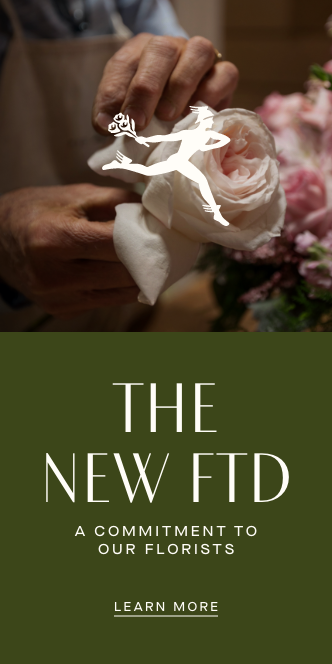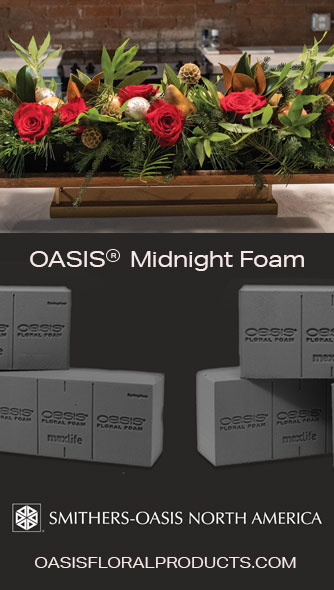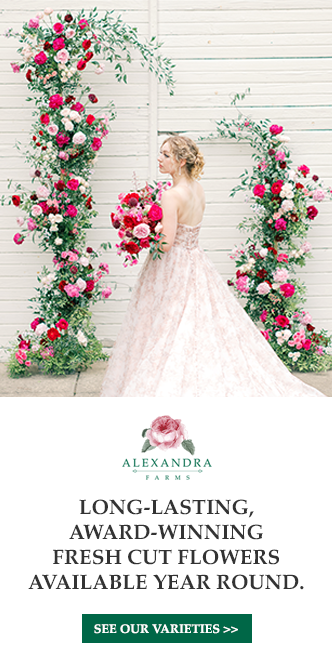1. Phalaenopsis amabilis (moth orchid)
These exotic tropical blooms feature a neutral and watery flavor. It may come as a surprise to some that nearly all general of orchids are edible and can embody a wide range of flavors.
2. Alcea rosea (hollyhock)
These garden classics can range in color from white to dark red, pink, yellow, orange and even “black.” Hollyhocks, like their cousins
Malva (mallow) are completely edible and feature a neutral flavor.
3. Gardenia jasminoides (cape jasmine)
These heavenly scented blooms are prized for their honey-like flavor. In addition to being safe for fresh consumption, they can also be used in a variety of applications from pickling to tea making.
4. Wisteria spp.
Indigenous to many parts of North America, Asia and Europe, these fragrant vining flowers are, indeed, edible and celebrated as delicacies in their nations of origin. However, it should be noted the rest of the plant is toxic, and particular care should be taken to remove the stems from the blooms. Depending on the species,
Wisteria can be enjoyed raw in salads or cooked (either blanched or deep fried) to produce a nutty pea-like flavor.
5. Agave amica, formerly Polianthes tuberosa (tuberose)
Prized by the ancient Aztecs for their ability to produce a chocolate-enhancing oil, these florist favorites can also make for a delightful surprise floated atop summery vegetable soups.
6. Dianthus caryophyllus (carnation)
These flowers come in a dazzling array of colors sure to delight any blossoming baker, and they are best enjoyed fresh. To fully enjoy their surprising clove-like flavor, be sure to trim off the bitter base of the blooms and focus on the colored petal sections.
7. Matthiola incana (stock, gillyflower)
A consistent performer in wedding bouquet work, these florets are also an excellent choice for atop cakes and in cocktails. Blossoms have a perfume- like flavor and are delicious fresh or candied.
8. Freesia spp.
As a rule of thumb, flowers belonging to the
Iridaceae (Iris) family are not meant for consumption, apart from a few lovely treats including
Freesia.
Freesia blossoms are excellent infused into simple syrups to make cocktails, sorbet and other sweets, but they also provide an enchanting aroma when served fresh.

Borago offcinalis (borage, starflower) blossom on cheese
Historically, the petals of these bright red flowers have been used to tint wines, syrups and soups. Interestingly, these flowers can also be used to produce a substitute for olive oil.
10. Acmella oleracea (toothache plant, paracress, Sichuan/ Szechuan button, buzz button, tingflower, electric daisy, eyeball plant)
These cheerful little blooms can also be powerful little moneymakers in culinary markets. Common names include “toothache plant” due its delightful anesthetic properties. Caused by a naturally occurring chemical called spilanthol, this plant causes a spicy effect, like peppers, but uniquely tingling. Use this flower in drinks, sweets and savory dishes, but remember, a little can go a long way.
11. Antirrhinum majus (snapdragon)
Not particularly prized for their flavor, these flowers are prized by edible flower growers mostly for their color and composition. While the blossoms are 100 percent safe to consume, we suggest using these flowers as a visual garnish more than a main dish because they are apt to change in flavor depending on soil quality.
12. Syringa vulgaris (lilac)
This old-time seasonal flower has recently enjoyed a resurgence both in floral styling and culinary communities for its citrusy flavor. Lilacs create a sweet-tasting syrup with an intense purple color. They can also be enjoyed candied, fresh or even made into wine. For edible orders, darker colors of lilacs may be preferred because white blossoms spoil quickly.
13. Gladiolus dalenii/natalensis (corn flag, sword lily, African gladiola, parrot gladiola, Natal lily, Natal gladiola, maid-of-the-mist)
Like its cousin
Freesia, this flower beats the general rule that flowers in the
Iridaceae (Iris) family are toxic. Gladioli are safe to eat and have a flavor quite like a mild lettuce.
14. Musa acuminiata/x paradisiaca (banana blossom, plantain flower)
It should come as no surprise that this state- ment-making tropical flower is also a tasty treat. Regarded as more of a vegetable, banana blossoms can sometimes be found in specialty grocery stores and taste remarkably similar, when cooked, to artichokes (
Cynara spp.).
15. Fuchsia spp. (lady’s eardrops)
Compared to sharing the addictively crave-worthy flavor of rose hips,
Fuchsia features both edible flowers and berries. Depending on the life cycle of this flower, flavors range from lemon to grape and even black pepper.
While we are big fans of having your flowers and eating them, too, it should be noted in selling edible flowers, we, as florists, have a responsibility to not sell flowers (as edibles) that have been treated with potentially harmful chemicals. If you are looking to make the jump into edible flowers, consider sourcing from specialty growers or contacting a local organic farm during the planting season about growing a small supply “on contract” for you. You may be delighted to learn many farms are already growing common edible flowers as companion plants to their food crops to aid in pollination.






















